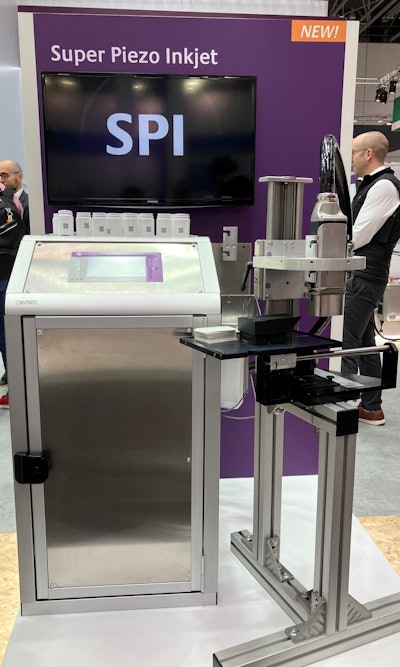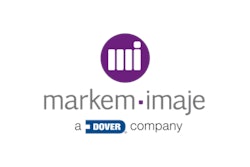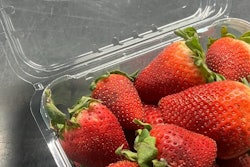From Markem-Imaje, the new Super Piezo Inkjet (SPI) printer—first launched at interpack in spring 2023 and making its U.S. debut at PACK EXPO Las Vegas—combines piezo electric printing technology and small-character inkjet technology to enable users to print high-resolution, serialized 2D barcodes with variable data on a range of substrates and shapes, including curved surfaces. With these capabilities, the printer is GS1 Digital Link compatible, meaning it’s equipped to meet the proposed GS1 Digital Link standard, whereby brands are encouraged to phase out existing UPC barcode technology in favor of a dynamic 2D barcode.
As Josh Heugel, senior account manager for Markem-Imaje, explains, by using the 2D barcode, brands will be able to embed information for their consumers—such as promotions and incentives—into the digital link, which can be scanned via a smartphone. It could also advise consumers at point of sale on recalls, allergens, expiration dates, and more. The GS1 Digital Link will also allow the product to be tracked throughout the logistics supply chain route for serialization, verification, and traceability needs.
In an article on Markem-Imaje’s website, author and global strategic account manager for the company, Erik Lagarde, writes, “Central to this revolution [the GS1 Digital Link] is the premise of ‘hot data,’ a step change from traditional static data to dynamic information extracted using a 2D barcode that acts as a web-based URL. This connects manufacturers and brand owners to the digital world, giving them the agility to react much more quickly and efficiently to trends across the entire value chain—from distributor to retailers and consumers.”
What sets the SPI apart and qualifies it for GS1 Digital Link compatibility is its high-quality—it has a native resolution of 100 dpi up to 200 to 250 dpi—its ability to print dynamic, graphical data, and its skill at printing on curved surfaces, all at speeds to 400 ft/min. For extrusion applications, such as pipes, tubes, wires, etc., Markem-Imaje cites a speed of nearly 10,000 ft/min.
What makes these capabilities possible is the machine’s mix of piezo electric, or drop-on-demand, and small-character inkjet printing technologies. Explains Heugel, “Drop-on-demand will give you high-speed printing, and it gives you a larger print area, but it isn’t particularly good at fast drying times. And it’s limited in its in its range of inks, just due to the technology within the printhead. When you look at small-character inkjet technology, you’re limited on print height, you’re limited on resolution, and you could be somewhat limited in speed. So by marrying those two technologies, we’re able to take the best of both worlds—the high resolution of the drop-on-demand printhead, the fast dry time with the small-character printing ink, and the print speed of the small-character inkjet printer, and build of off those to make the Super Piezo Inkjet, the SPI, in short.”
The SPI also meets another growing need for brands: late-stage customization. “Brands are looking to reconcile the amount of primary packaging material SKUs because of sustainability initiatives. They spend an awful lot on packaging,” Heugel says. “To be more resourceful, they’re looking for technology that will enable them to go with a more generic outer package and then customize the packaging by printing on-the-fly at the point of production, rather than at a converter.”
Addressing another growing need of brand owners—more sustainable packaging resulting in the use of new materials—the SPI also leverages Markem-Imaje’s small-character inkjet printing expertise to allow for a wide variety of inks and substrates to be used. “It all depends on customer needs,” says Heugel. “We like to have the foresight to work with brands knowing their packaging will evolve in the next several years as they look at more sustainable primary packaging materials, including more recycled materials, less polyethylene, and more paper-based packaging, for example.”
Target markets for the SPI include extrusion applications, CPG products, and pharmaceuticals, among others. PW



























